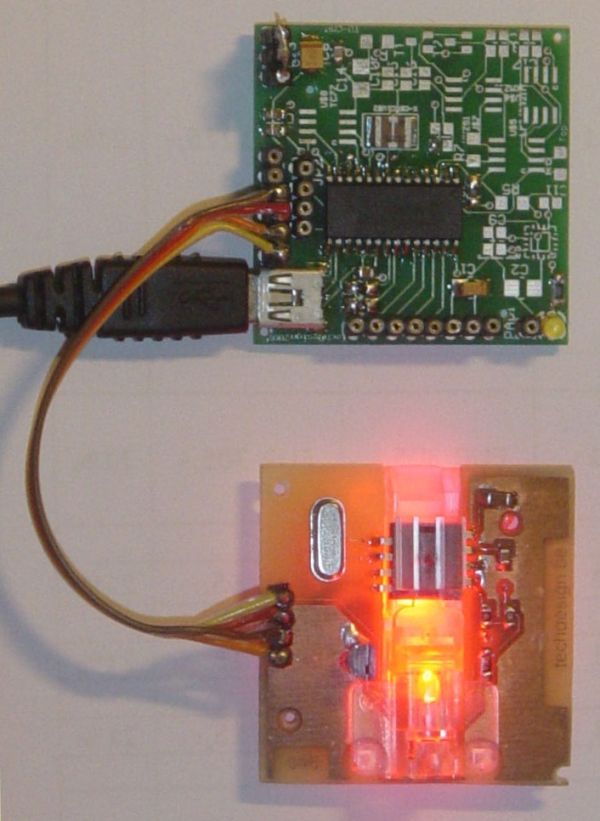This is an example USB project showing how to interface an optical mouse sensor (the ADNS-2620) with a standard XP/Vista computer.
The TD-USB-01 board with a PIC18F2550 communicates with:
- the PC: USB 2.0 through a mini-B connector.
- the mouse sensor board: SPI over 4-wire flatcable.
Here are the technical specifications:
- PC Win XP/Vista interface application with Visual C# 2008 Express: free download.
- TD-USB-01 (green pcb on top) with PIC18F2550 USB HID setup.
- Mouse sensor board (046) with ADNS-2620.
- USB Bus powered, no external power supply needed.
- ADNS-2620 registers selection stored in the windows registry.
- Refresh rate from 1mS up.
- Data bits & bytes details.
- Real mouse functionality.
- Sensor CCD 324 pixels: image displayed: 18×18, 6-bit greyscale.
- TD-USB-01 software is 100% upgradable with a simple RS232 bootloader.
- RS232 interface for raw data readings.
- PCB Dimensions: 40 x 41 mm or 1″57 x 1″61
These assembled boards are available from our online shop.
Source code (CCS C and Visual C#) can be purchased separately.
Sensor example Source code (CCS C) , sensor board pcb layout and schematics (Eagle) available.
Last update: March 28, 2009.
Sensor Board (046): Eagle PCB layout: 046_v002.brd – Jan. 31, 2009.
Sensor Board (046): Eagle Schematics: 046_v002.sch – Jan. 31, 2009.
ADNS-2620: CCS c source code: optical_mouse_v03.c – March 27, 2009.
TD-USB-01:Hex file: 046_v003.hex bootloading for the PIC18f2550 – March 27, 2009.
Windows interface application setup: 046_app_setup.zip – March 27, 2009. Written in Visual C# 2008 Express, compatible with Windows XP and Vista.
For more detail: TD-USB-01 interface with mouse sensor board using PIC18F2550

